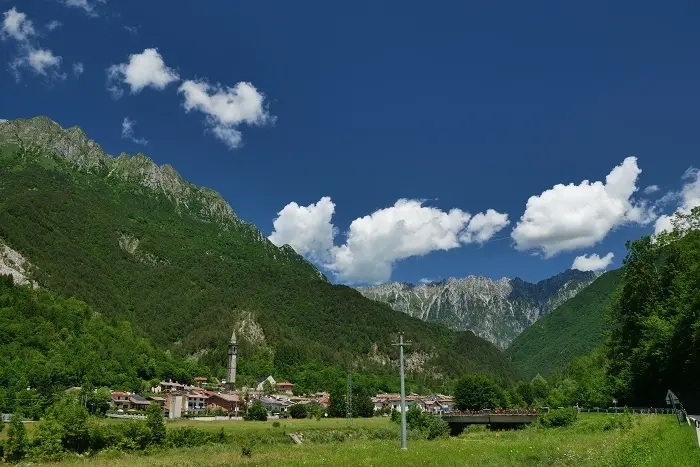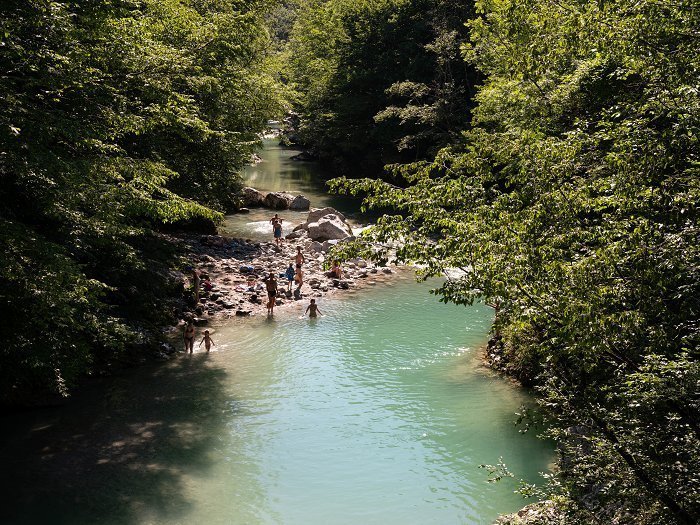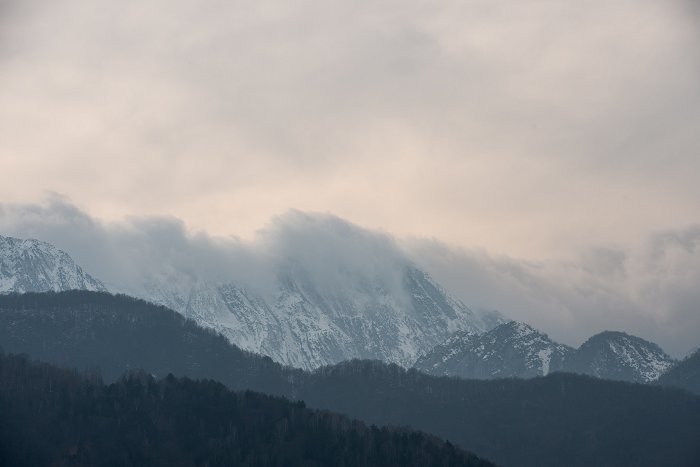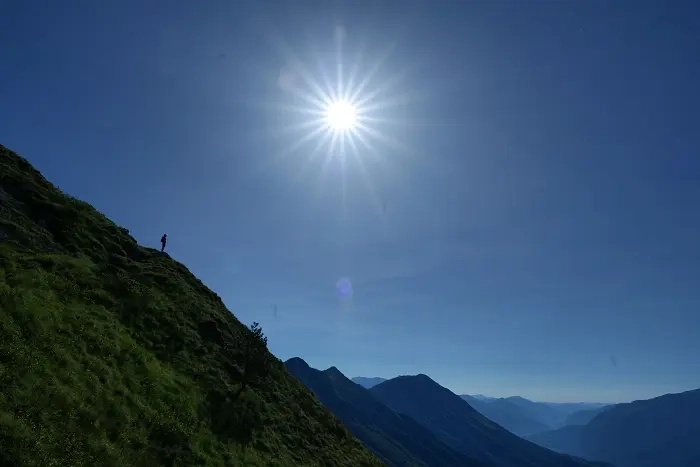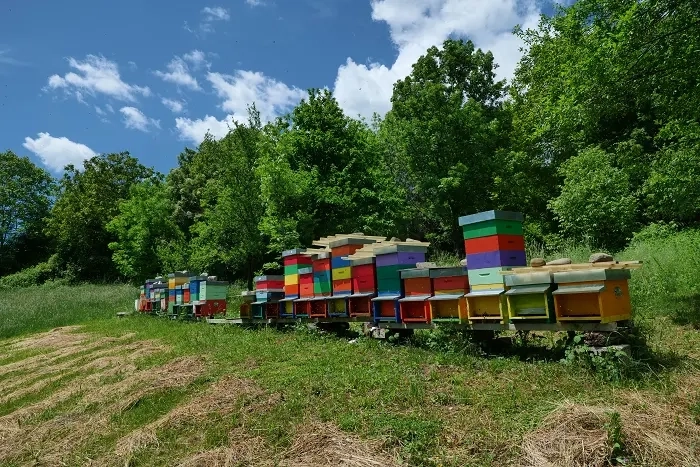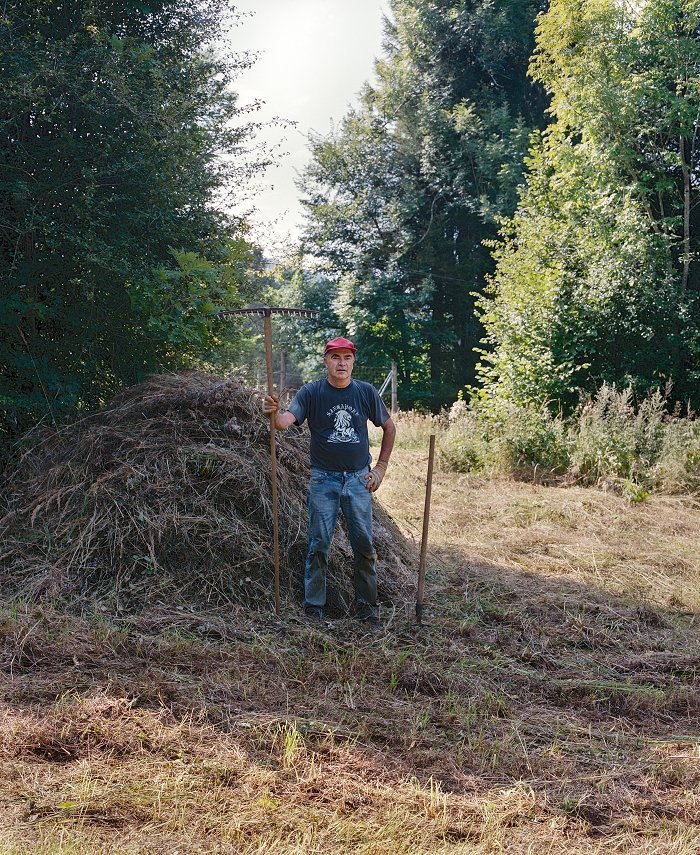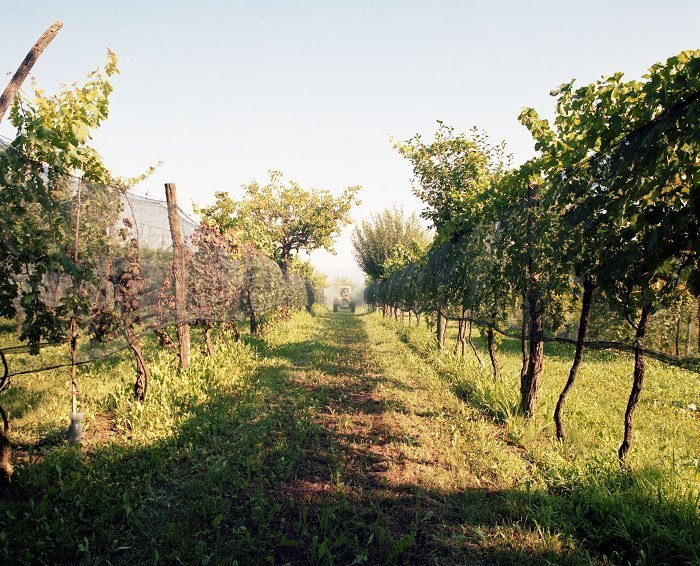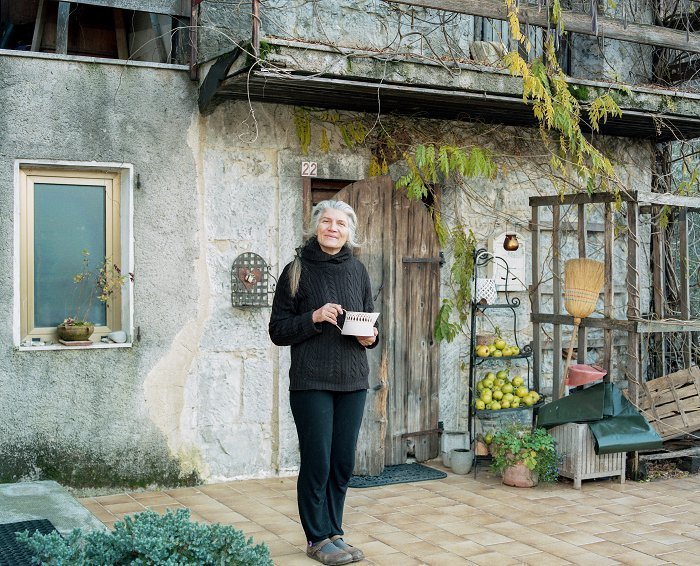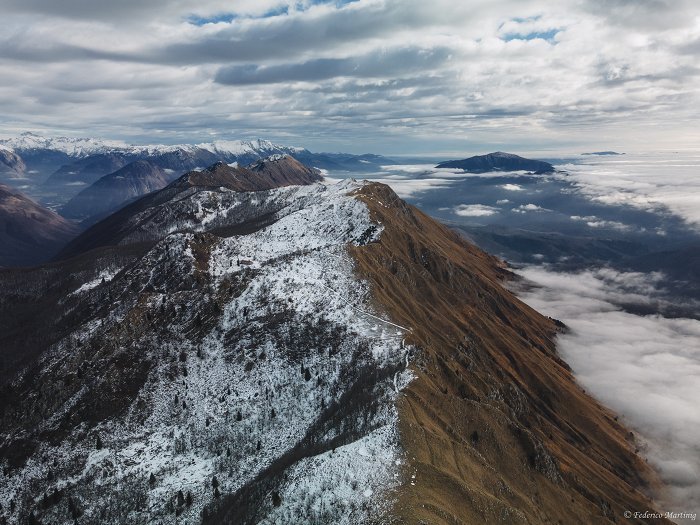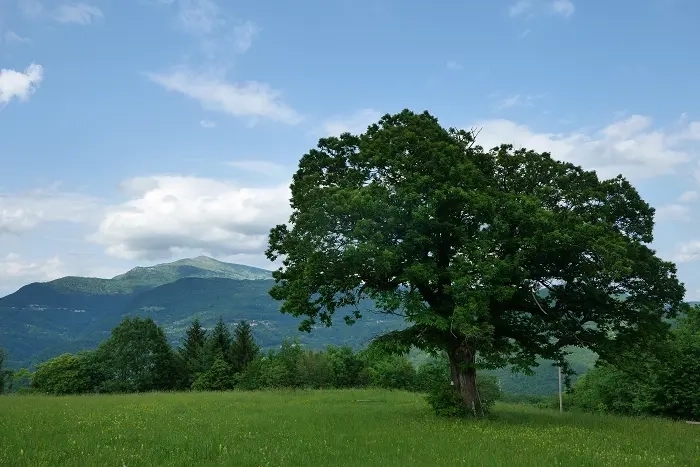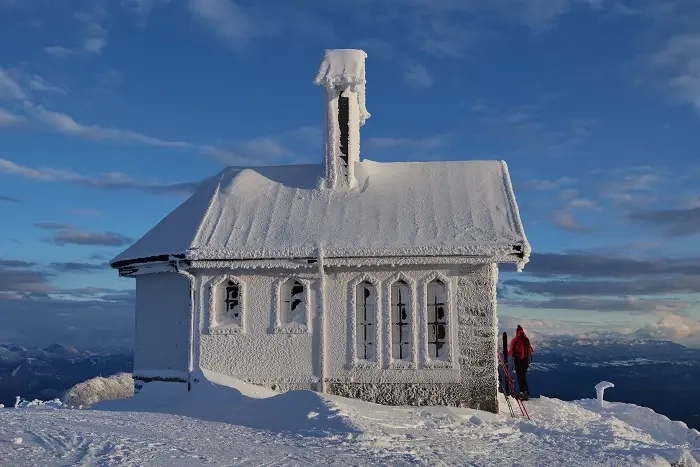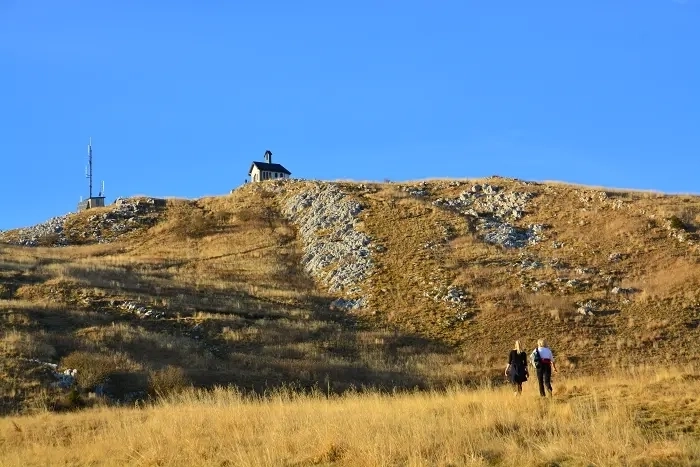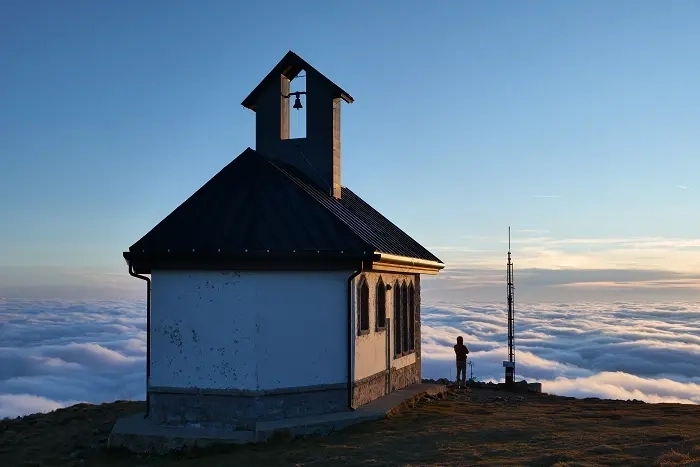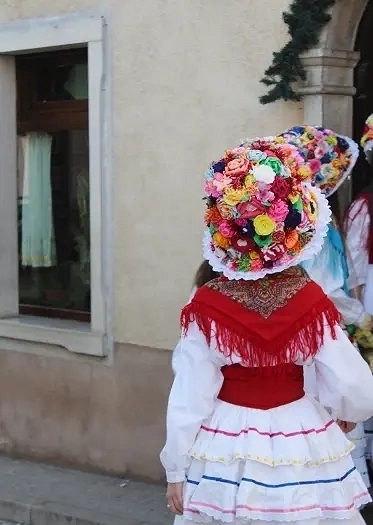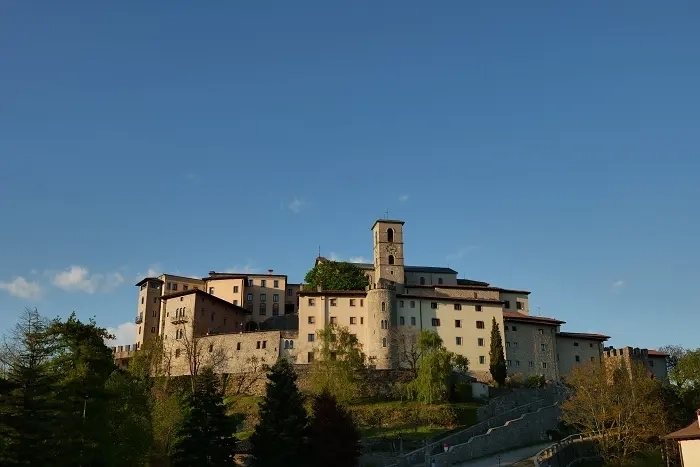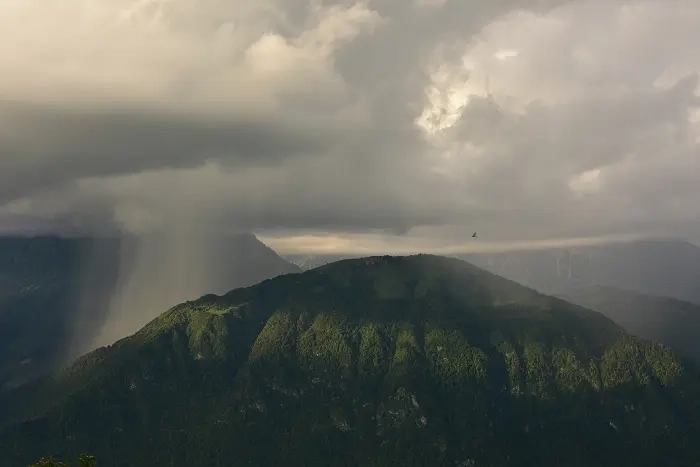Our valleys
Surrounded by lush green nature, the area between the Natisone, Torre and Resia valleys is also known by the name Benečija/Benecia, an abbreviated form of Beneška Slovenija, translated into Italian as Slavia Veneta, a term that refers to the centuries-old ties these valleys have with the history of the Serenissima Republic of Venice. The destination brand expresses the widespread bilingualism of the entire area involved, thus incorporating the name of the destination in its Slovene (Benečija) and Italian (Benecia) variants, and the three valleys comprised within the territory, bearing the names of the rivers that flow through them in a bilingual Slovene-Italian version. Lastly, the colours recall gubana and chestnuts, two local food items.
Everything in this territory can be divided into three.
Its rivers Natisone/Nediža, Torre/Ter and Resia/Rezija are popular for river trekking, while the numerous tributaries in the secondary valleys are known for canyoning.
Traditional food and wine products include the gubana/gubanca - a dessert original to the Natisone Valleys - indigenous wines: Ramandolo, Refosco di Faedis and Schioppettino di Prepotto and the Resia/Rozajanski strok garlic, a Slow Food Presidium.
The iconic Matajur, Gran Monte/Brinica and Canin/Kanin mountains were the set of a few important historical events.
This entire part of the Friuli Venezia Giulia region is located in the Julian Pre-Alps, which lie between Italy and Slovenia and where the Slovenian and Friulian linguistic minorities coexisted historically and have shaped the local culture that can be discovered in the numerous museums, some of which are united in the MI SMO TU tuka, izdë, kle, tle museum network.
The vestiges of ancient castles that guarded important communication routes, the fairytale waterfalls, the caves - some of which can be visited - and the numerous small villages scattered among the forests give great charm to this area, that is waiting to be visited and experienced intensely.
The Natisone Valleys
The Natisone Valleys, consisting of the Cosizza, Erbezzo, Alberone, Judrio and Natisone valleys, are divided into eight municipalities: San Pietro al Natisone, Pulfero, Savogna, Grimacco, San Leonardo, Drenchia, Prepotto and Stregna. The city of Cividale - a Unesco World Heritage Site - is the almost obligatory entry point for exploring this territory for those arriving from the Friulian plain. Those arriving from the north-east will pass through the town of Kobarid/Caporetto.
Castelmonte/Stara Gora - a thousand-year-old Marian shrine located in a strategic and very scenic spot - is one of the landmarks of these valleys and the destination of numerous pilgrimages. The votive offerings preserved in the church and crypt give an original insight into the peasant world and into popular and naive art.
The Grotta d'Antro allows us to discover an evocative place set in the rock, filled with history and legends, such as that of Queen Vida who confronted the perfidious Attila.
The SMO Museum in San Pietro al Natisone opens a window on the culture, history and traditions of this border area, with numerous multimedia applications that will fascinate adults and children alike.
Another reason to explore these valleys is the genuine local cuisine, with its štakanje, briza and typical desserts such as gubana and štrukji.
The Torre Valleys
The Torre Valleys, furrowed by the stream of the same name and its tributaries - Cornappo, Chiarò, Grivò and Malina - present a great array of landscapes and natural environments punctuated in the valley bottom and on the hillsides by wooded and verdant villages and hamlets. Tarcento is the gateway to the Torre Valleys, which includes the municipalities of: Lusevera, Taipana, Nimis, Attimis, Faedis e Torreano.
The vestiges of many medieval castles that presided over these territories give us an excuse to discover the museum dedicated to them, as well as the paths, churches and villages that rise around these fascinating places.
Thanks to their peculiar geology, the Torre Valleys have many caves such as the Grotta Nuova di Villanova, which can easily be visited by following the tourist or speleological-tourist route.
For wine lovers, this area offers several indigenous wines: Refosco di Faedis, Picolit and Ramandolo. Ramandolo is also one of Nimis hamlets, where the essence of heroic hillside viticulture can be grasped: here, the vineyards climb up an evocative terraced landscape, from the top of which the view opens onto the Friulian plain and the Adriatic Sea.
The Resia Valley
The Resia Valley, traversed by the stream of the same name and overlooked by the Monte Canin massif - the highest peak in this area, with its 2587 m - boasts a particularly interesting cultural heritage that has been preserved over the centuries, thanks to its geographical position and the tenacity of its people. Resia’s songs, dances and carnival are known for their originality and beauty, and can be appreciated in the recordings in the Museum of the Resia Valley People.
There are numerous routes to discover in this valley, which is also home to the Julian Pre-Alps Natural Park visitor centre, where we can understand how great the biodiversity of these places is. The park aims to conserve and promote the development of the area, by preserving the habitat, native flora and fauna.
The knife-grinder is one of the symbols of this valley. Many of its inhabitants have travelled across much of Europe to practice this particular trade. This and many other fascinating stories can be discovered in the Stolvizza knife-grinder's museum.
Culinary tradition also holds surprises in store, with ćalčüne, osojanica or Resia/ Rozajanski strok garlic, a Slow Food presidium, offered in various dishes and combinations.
